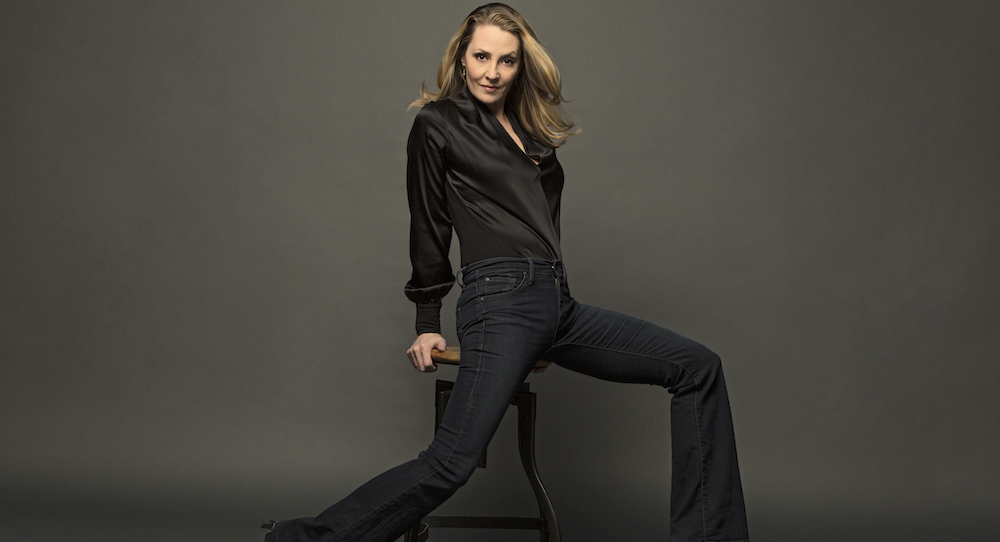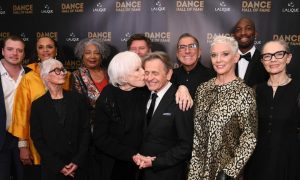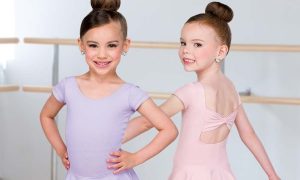Many Dance Informa readers might recognize Shannon Lewis as the “I Gotcha” girl in the original Broadway company of Fosse. With over 10 other Broadway shows under her belt, Lewis has worked with some of the most esteemed choreographers in the business. But now, Lewis is making a name for herself in another part of the Playbill. More recently, Lewis’ performing has taken a backseat to her own choreographic endeavors. And, as much as we love watching her dance on stage herself, her choreography is taking land (and sea!) by storm. Whether creating an individualized solo routine for Pace University’s senior showcase, launching a national musical theater tour, or serving as guest faculty for Jacob’s Pillow, Lewis excels at it all. Requiring strength, technique and acting chops, Lewis’ aesthetic is an exciting juxtaposition of athleticism and elegance — the kind of choreography that almost every girl wants to dance.
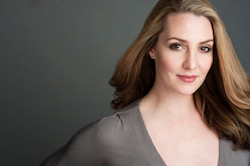
Shannon Lewis. Photo by Dirty Sugar.
Amidst her busy schedule, Lewis was able to tell us about her latest project for Princess Cruise Line, The Secret Silk, and her inspirations and aspirations as a choreographer.
You’ve worked with many of the industry’s most renowned choreographers — Susan Stroman, Chet Walker, Ann Reinking, Wayne Cilento, Warren Carlyle, Rob Ashford and more. Which one(s) influenced you the most?
“I can honestly say that I have learned something valuable from each one of the names you mentioned…and many more that you didn’t. I have been so lucky to have gotten to be in a room with these trailblazers who trusted me with their work. I’ve also been very honored to create new roles and dances with these icons, and that kind of collaboration really gave me insight into all the different processes and angles to approach different shows and mediums. I was able to develop my ability to handle so many different styles of dance but also different styles of working. Also, they all were performers who became choreographers, so I saw that the path was possible. Chet Walker has always been a champion of mine from my early days learning and performing the Fosse style to his belief in me as a choreographer. Sometimes people like that can see your potential before you even are aware of it. Even the relationships that were challenging taught me something about myself as a performer and as a person. Also, watching them successfully navigate the business side of showbiz was very valuable as well, and gave me great insight that it takes a village to put up a show.”
How would you describe your ‘voice’ as a choreographer?
“I like to approach everything with a strong viewpoint. For me, the story is the first thing that gets my imagination going — along with inspiration of the music — then I start to explore what the vocabulary might be. I come from a technical ballet and jazz background, but I also was a high-level gymnast. I am attracted to precision and dynamic, stylized movement. I love athletic movement. I love watching challenging choreography that is performed effortlessly. I love creating unique lines and angles that keep the expression rooted in the intricacies that live in the music. I love a deep and connected musicality in movement. I think I am very good at creating choreography that tells a story in a modern way. I gravitate toward ‘choreography with a brain’, in that every movement has meaning behind it and there are unifying layers that bring all the elements together. I require my dancers to always have a point of view; the acting and story are as important to me as the steps.”
It can be intimidating to make the move from dancer to choreographer. What was the transition like for you, and what advice would you give to aspiring choreographers?
“I never thought of it as a transition! It truly has felt like a continuation of my career, just turning the page to a new chapter. I don’t consider the two things a different path. If anything, the ‘transition’ has been from caterpillar to butterfly; it has allowed my creative expression to blossom. It’s just me expressing myself even more fully. I think it’s intimidating because to be a great professional dancer, part of your job is to be a great muse for other people’s ideas. I loved being given choreography as a dancer and the challenge of giving the choreographer exactly what they were asking for while making it my own and putting myself in it. I wouldn’t trade any moment of the journey so far. My best advice is not to label yourself. Creation is creation however it is expressed. Use all of your experiences in life and on stage to reveal your own unique point of view.”
When working on a brand-new project like The Secret Silk, how do you collaborate with the other members of the creative team? What role does choreography play in this show?
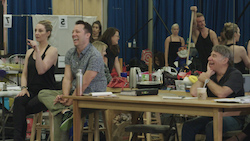
Shannon Lewis, John Tartaglia and Stephen Schwartz. Photo courtesy of Lewis.
“It’s very exciting to be a part of something unique and original like The Secret Silk because we could create our own original world. We were able to make our own rules and take big ideas and turn them into reality. John Tartaglia, the writer/director, brought me onboard the project very early on, so we really got to dream big together as we went along. We’ve done several projects together, so he and I bounce crazy ideas off of each other and see what we can make into reality. There is a lot of imaginative joy involved in our process, and actually a lot of those ideas ended up in the show. We were lucky enough to invite the designers on the team to watch some early explorative dance studio time. They are all incredible talents! They all saw the movement that I had started to create for the show, and we were all able to expand the world together. They took the ideas and ran with them. There is an unfolding, origami nature to the show overall, where something simple suddenly transforms into something unexpected and beautiful. The movement starts simply and then gets more complex and layered. The show is designed so that choreography plays a very important role in the storytelling and overall energy. There are sections of the show where story is told in movement and music without lyrics or dialogue, so I worked very hard to find a physical language to pull all the elements together. The choreography also sets the tone stylistically from the very first few moments of the show; we want the audience to feel they have been transported to a new world. The intricate lines and angles that the dancers make help forge that immediately. The show never stops moving. It seamlessly tells the story, which feels exhilarating for us and the audience!”
How did you research and prepare to choreograph The Secret Silk? What is your creative process like as a choreographer?
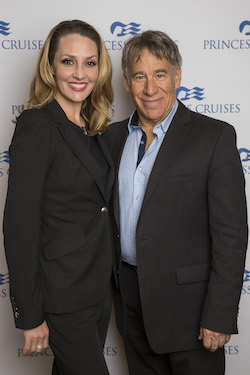
Shannon Lewis and Stephen Schwartz. Photo by Jesus Aranguren/AP Images for Princess Cruises.
“I always start with the story. The Secret Silk was based on a well-known Eastern fable called ‘the grateful crane’, so I researched its history and basic universal themes. Love, loss, family, greed, sacrifice and supernatural magic. In addition to my own dance technique, I dove into as many different and out of the box methods of movement that I could find. Tai chi, Martial arts, Brazilian fighting techniques, swordplay, acrobatics, flamenco, silk water sleeves. I am also a certified Yoga instructor, so I pulled shapes and themes from that as well. Then I worked with John and found some music that inspired me and just got in a studio and started moving. It was important to both of us that we created a unique movement language that didn’t feel attached to one culture or area of the world — that it was its own new universe. Once my (awesome) associate, Anna White, and I started to settle on basic steps, John and I had a series of dance and movement workshops with some fabulous dancers in NYC and LA. We developed the style and substance of the choreography during that process. Stephen Schwartz spent time with us and was thrilled to watch it develop and give us helpful guidance and feedback. I like to invite trusted dancers into the process once I have some real understanding of my point of view. I want to leave space within the steps for the dancers to fill with their own talents, but I am clear about my vision and direction. If there are discoveries made in that process, I’m thrilled to follow where it leads, but it’s important for me to see the style and specificity of my ideas on the dancers in the room first. We ended up with some pretty exciting, original movement and phrases during those rehearsals.”
Choreographing (or dancing, even) for a cruise seems like a dream — a job and a vacation in one! What are the perks and the challenges about cruise ship contracts?
“It’s a fantastic opportunity to travel and see the world while doing what you love! What is truly exciting for me as a choreographer is that the cruise industry is really a new frontier for brand new musicals and ground-breaking live entertainment. The venues and theaters aboard the modern cruise ships like Princess Cruises are chock full of modern theatrical enhancements like elevators and LED screens on par with Broadway. The talent of the dancers and singers is pretty staggering, and it has become a real legitimate place for fantastic and seasoned performers to work with Broadway creative teams. I think it can be challenging for both performers and creatives to stay fresh while working aboard a ship for a long contract. However, that applies to any long-term job in showbiz! To know that on a ship your contract is a defined amount of time and the show won’t close early gives performers an excellent consistent job. You can travel to amazing places and also finish your contract with fantastic credits on your resume and money in your pocket. Some of the most exciting new creative work is being done in the shows on the high seas. It’s an industry that is evolving and moving to exciting new places.”
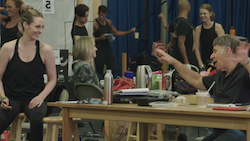
Shannon Lewis and Stephen Schwartz. Photo courtesy of Lewis.
Even though dance appears to be a female-dominated industry, the majority of choreographers are men. Why do you think this is? What challenges do you face, and what are your aspirations as a choreographer?
“It’s definitely a timely question. I think it’s fantastic that there seems to be a worldwide conversation about opening the door for more creative and talented women to have an equal voice in the arts. My earliest and most influential teachers during my formative years as a young dancer were all women. When I moved into dancing as a professional, all the choreographers were generally men. I never questioned it until I became more mature and saw the imbalance. I wish I could say with clarity why this has been the case. I think the answer is extremely complicated! I am glad that this conversation has opened up. For me, I had creative ideas and energy that I couldn’t ignore. I didn’t think about being a woman; I just wanted my voice to be heard. The business side of things sometimes brings challenges. I have been in production meetings where in a large group of creatives, there are only one or two women in leading positions. It made me feel like an outsider when I was an important member of the team. The good news is that women are bringing fresh new ideas and energy forward, and not asking for permission. The industry always responds to that. I really love to see when creative teams have a diverse make-up with many different perspectives and an equal balance of men and women. The yin and yang are great for creation! There is room for everyone; we all can bring something new and unique to the table. I hope to have all the doors open for myself. I want to work with anyone and anywhere that I can be challenged to create something original using my distinct perspective. I love the connection of live theater and performance, and I want to keep trying to push the boundaries of where it can go and who it can reach. I’d love to bring that to other mediums like television or new forms of computer-generated movement. The sky’s the limit, I hope! I will try to keep evolving and creating and loving every minute.”
Visit www.shannonlewis.net for more about Shannon Lewis and www.princess.com to book your Princess Cruise and see The Secret Silk live on stage.
By Mary Callahan of Dance Informa.


